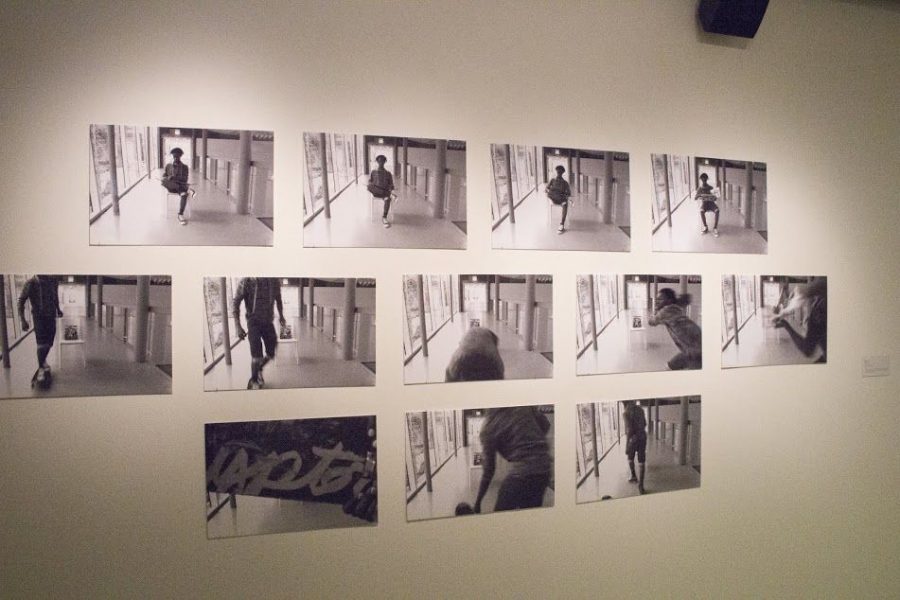Graduate students mentor teen artists
Students who participate in the ArtShop program are currently displaying their work at the “Collective Possibilities” exhibition at the Hyde Park Art Center, 5020 S. Cornell Ave., until April 19.
March 16, 2015
Through a partnership with the Hyde Park Art Center, 5020 S. Cornell Ave., graduate students in the Photography Department are serving as mentors for ArtShop, one of the center’s arts education enrichment programs.
ArtShop started in 2012 and provides South Side high school students with an opportunity to design their own art projects. The program, which begins in the fall and culminates in an exhibition of the students’ work at the end of the academic year, allows students to work in mediums of their choosing, including film, ceramics and installation work.
The students’ work often reflects the work that is done at the Hyde Park Art Center, said Mike Nourse, director of education at the center. With resources like digital cameras, exhibition space and darkrooms available, many teens choose photography.
“One of our exciting elements is that we partner with Columbia and have graduate students from the Photography Department who help mentor and teach our photography teens,” Nourse said.
Columbia’s partnership with the program began in 2012 when Lena Vieira, a graduate student in the Photography Department, interned at the center.
“[Nourse] asked me what my goal was in getting my master’s, and one of my goals was teaching,” Vieira said. “So we paired up with the Photography Department here at Columbia to offer graduate students the chance to teach the teen program.”
Graduate students work within ArtShop but also extend their mentorship to other photography programs throughout the center, Nourse said.
As a teacher and mentor, Vieira said she helps students formulate ideas for their projects and introduces them to more technical skills such as developing film and using the darkroom.
“I started off working with students in the darkroom, trying to get them to slow down with photography as digital media has come into popular demand,” Vieira said. “[I show] them the whole process of what photography once was and has become.”
Donations from the college have also provided students with access to better photography equipment and resources, according to Vieira.
“Columbia has donated many supplies to the center, where students are now able to work with digital cameras and lighting equipment,” Vieira said. “They’re getting the hands-on equipment that students here at Columbia also get.”
Vieira said many of her students hope to pursue photography in higher education and as a career. A few students from her classes have gone on to receive scholarships to attend Columbia, either for summer programs or as full-time students. Others have continued their education in photography programs across the country.
The program itself is part of the art center’s larger education initiative called Pathways, which works with K-12 South Side students to foster their skills and general interest in art. The collaborative initiative between Chicago Public Schools and the center also provides students with a range of resources, including individualized mentorship and free classes at the center, according to the art center’s website.
The Hyde Park Art Center is just one of many art centers that CPS works with to enhance students’ arts education outside of the school classroom, said Ray Yang, an arts education specialist at CPS Arts Education Department. Yang, who previously worked at the art center and helped develop many of its arts education programs, said CPS is currently working to enhance arts curriculum in its schools.
“Arts education is absolutely vital for our students,” Yang said. “It was elevated to a core curriculum subject in the last couple of years as part of our CPS arts education plan, so that means it exists in the same table as literacy, math, science and social science.”
Students who take classes at the art center at a younger age make up a significant portion of those who apply for the ArtShop program once they reach high school, Nourse said.
“Our teens care about [the center] because we give them the support to essentially design their own growth and development,” Nourse said. “That starts with art and it starts with them connecting with art.”








